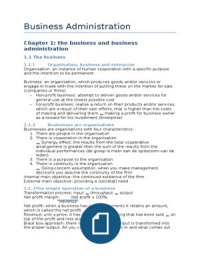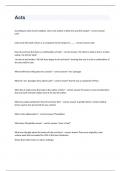Summary
samenvatting business administration 1-5
- Course
- Institution
- Book
Business administration, Peter Thuis & Rienk Stuive Chapter 1-5 in English Management of the facility organization, International Facility Management year 1 period 1.
[Show more]













